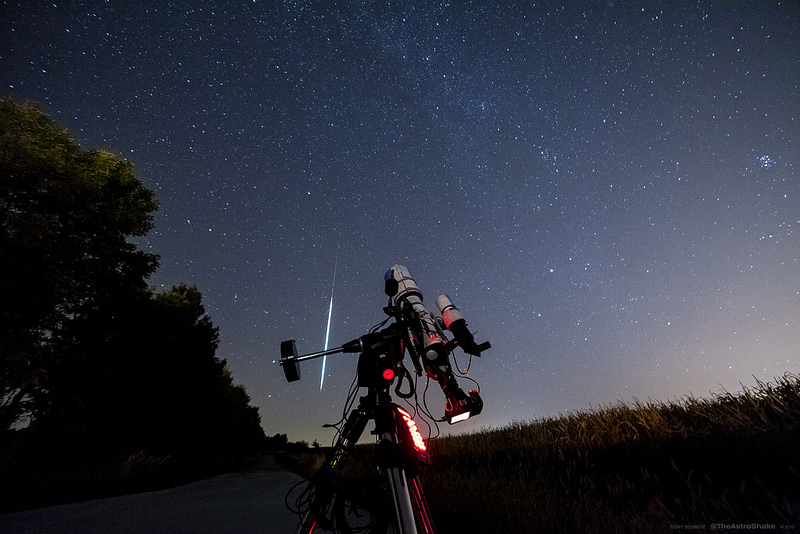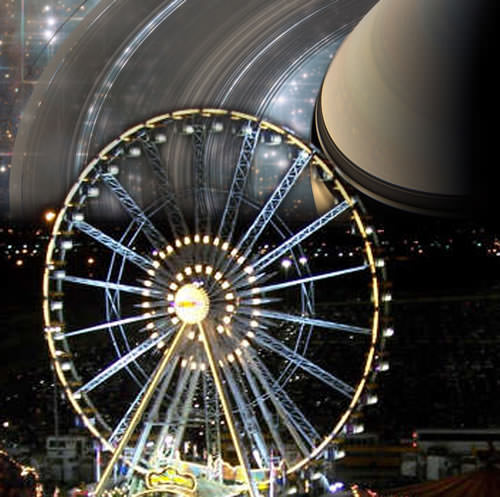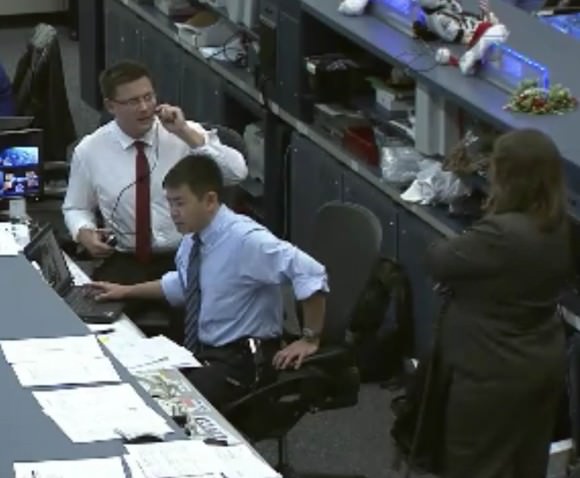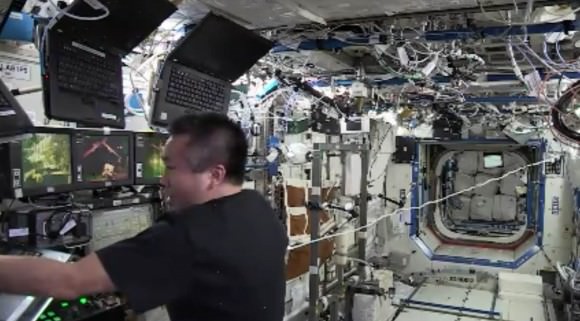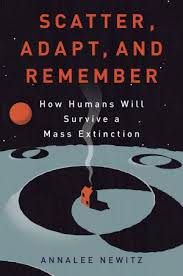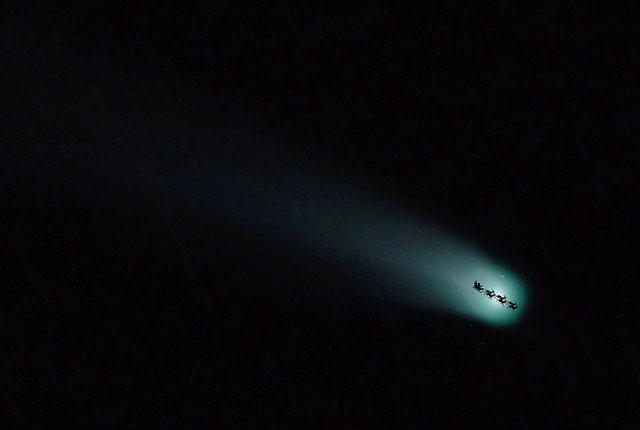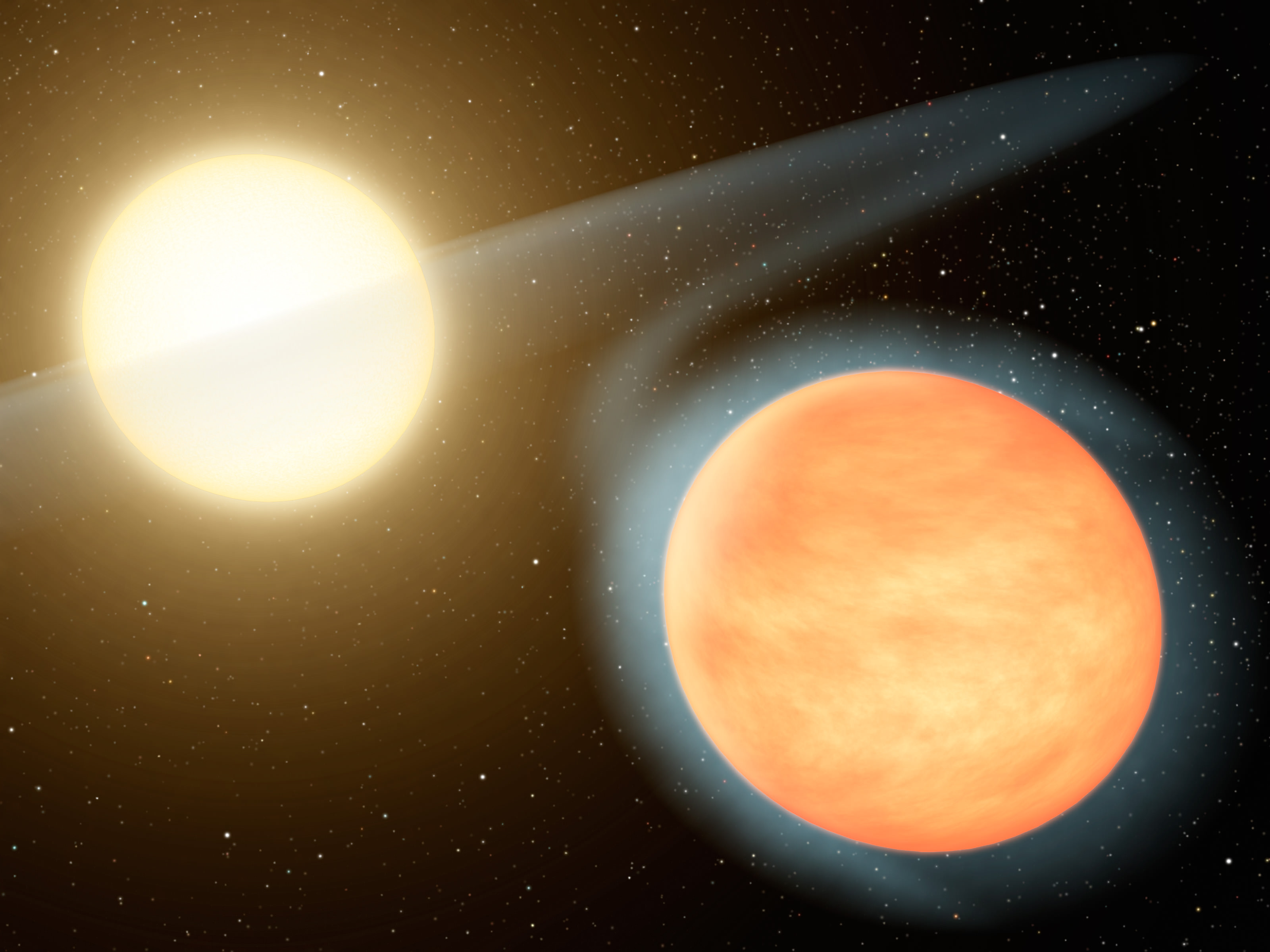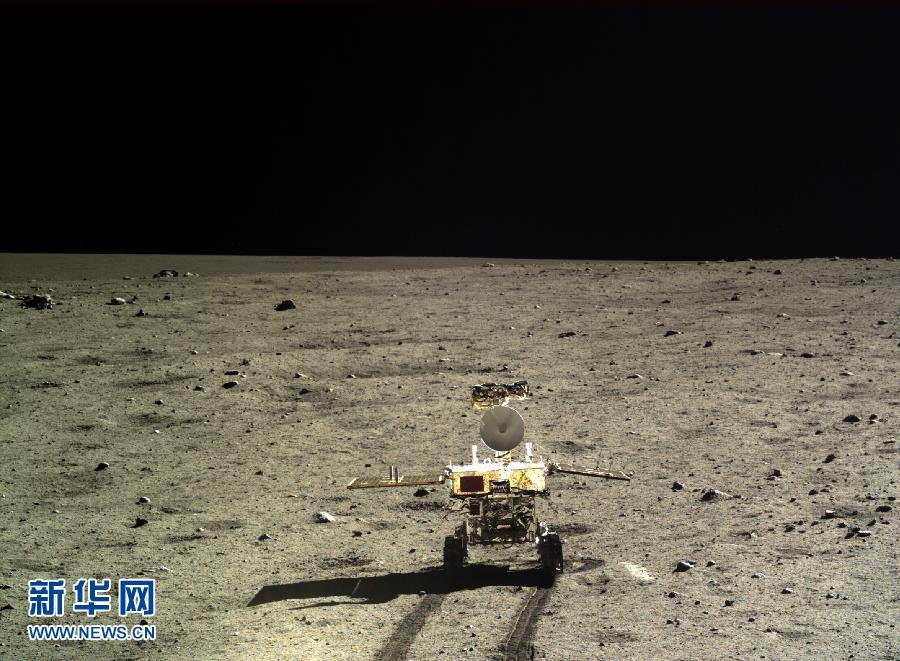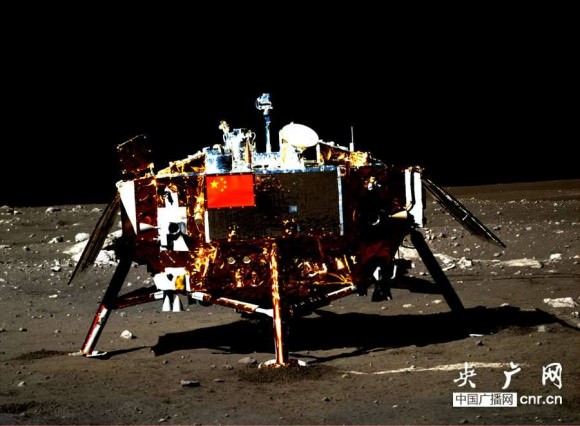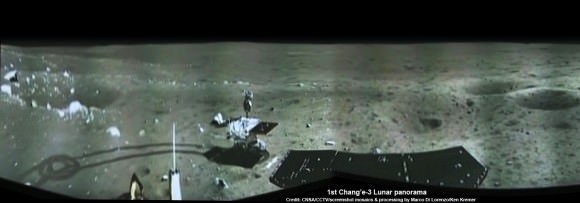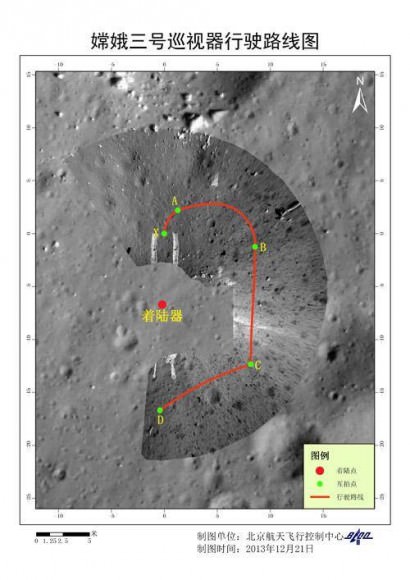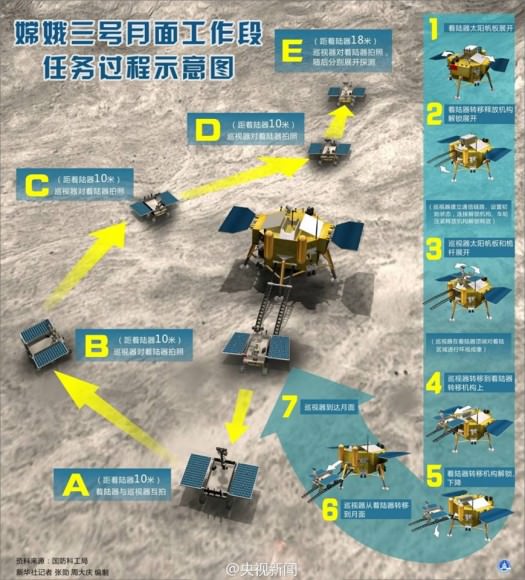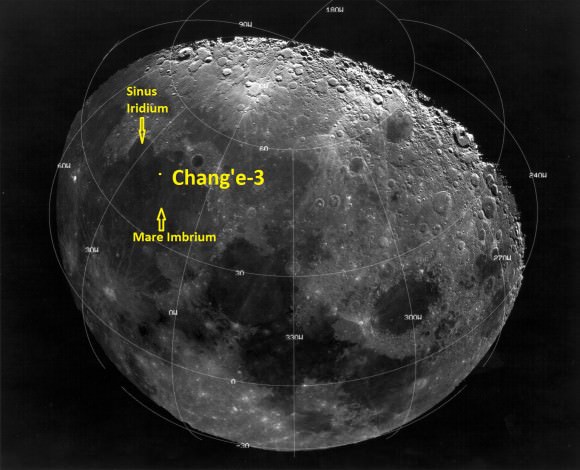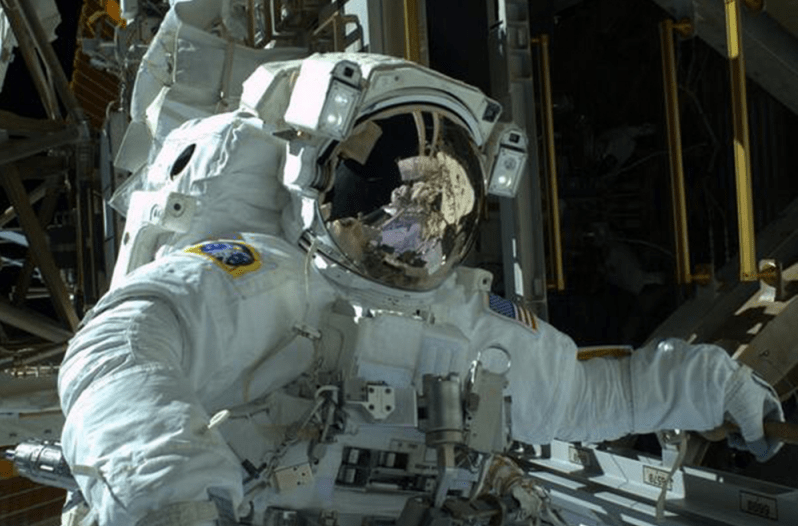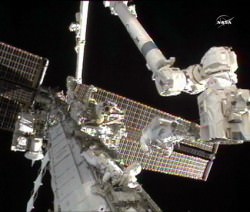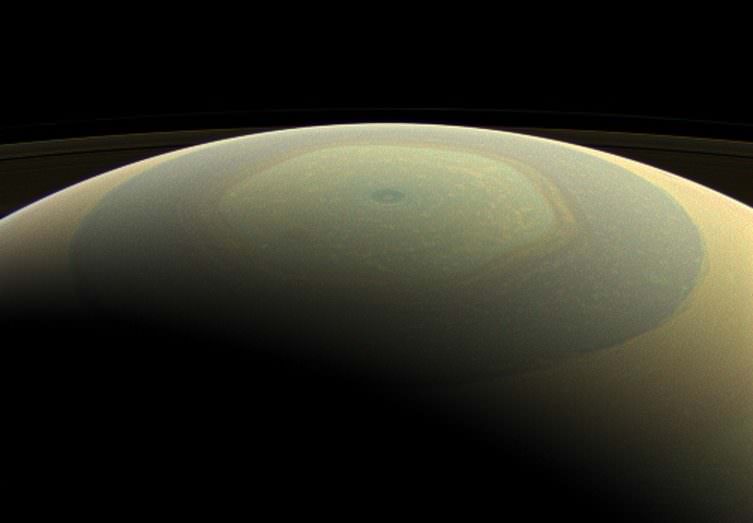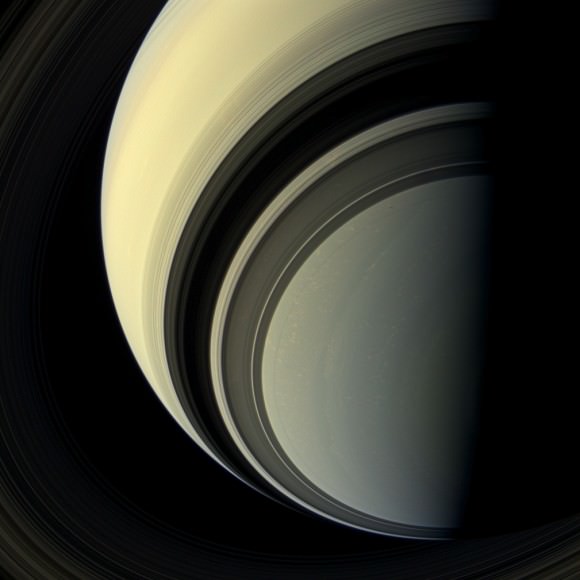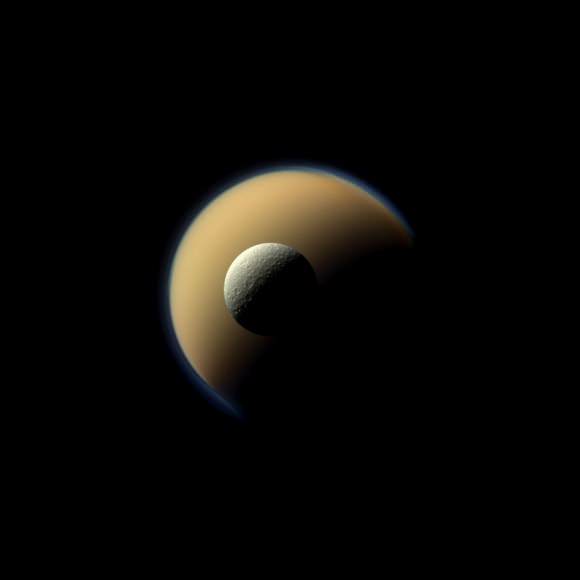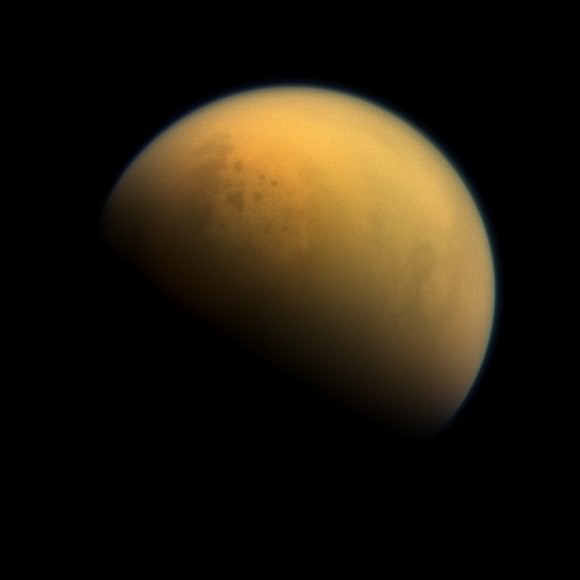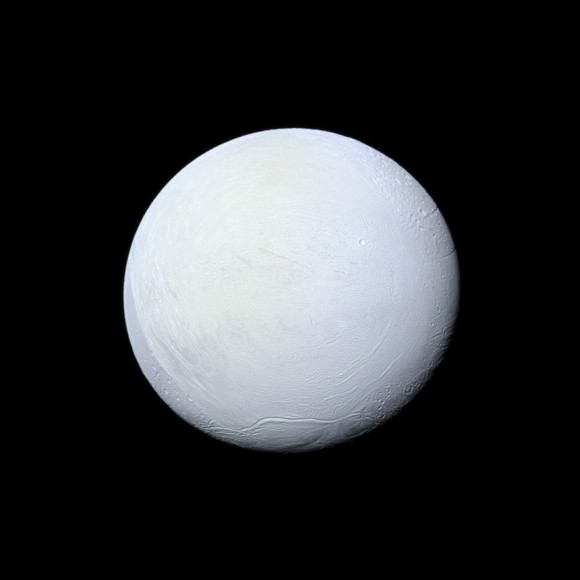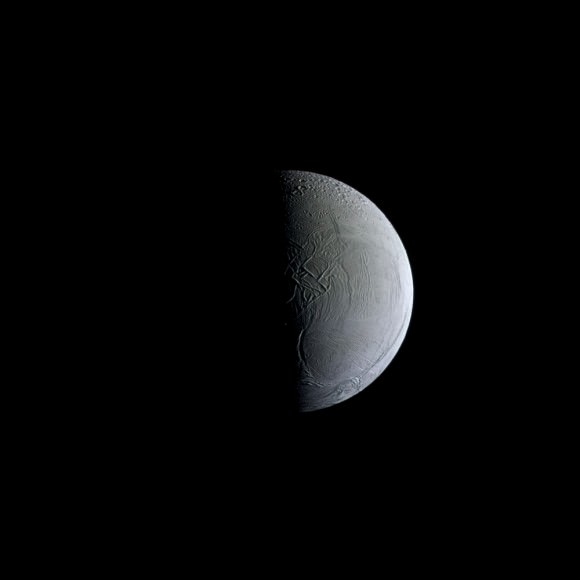It’s here!
As 2013 draws to a close, we once again cast our thoughts to all things astronomical for the coming year. For the past five years, I’ve been constructing this list of all things astronomical for the coming year, lovingly distilling the events transpiring worldwide down to a 101 “best events of the year”. This is the first year this list has been featured on Universe Today, so we’ll lay out our ground rules and reasoning a bit as to selection criteria.
Events selected run the gamut from conjunctions and eclipses that are visible worldwide or over a good swath of the planet, to asteroid occultations of stars that are only visible along a thin path along the surface of the Earth. Geocentric conjunction times for occultations are quoted. Generally, only conjunctions involving bright stars, planets & the Moon are noted. The intent of this list is to bridge the gap between the often meager “10 Best Astronomy Events of 2014” listicles that make their rounds this time of year and the more tedious laundry lists of Moon phases and wide conjunctions.
As always, we look at the coming year with an eye out for the astronomically curious and the bizarre. Times are quoted in Universal Time (UT) using a 24-hour clock, which is identical to Greenwich Mean Time (GMT) and Zulu for those in the military.
Some caveats as to how selections were made:
-To make the cut, asteroid occultations must have a rank of 99 or greater, and occult a star brighter than +8th magnitude.
– We only selected major annual meteor showers with a Zenithal Hourly Rate (ZHR) projected to be 20 or greater.
– Only lunar occultations of planets and bright stars are listed.
– Solstice seasons where the International Space Station reaches full illumination are approximate; the ISS gets boosted periodically, and therefore it’s impossible to project its precise orbit months in advance.
– Comets come and go. The comets included on this list are some of the “best bets” that are forcasted to reach binocular visibility for 2014. A big bright one could come up and steal the show at any time!
This list was meant to “whet the appetite” for what’s coming to skies worldwide in 2014 with a succinct rapid fire listing by month. Where an online resource exists that expands on the event, we linked to ‘em. A full resource list, both paper and cyber, is given at the end of the post. Print these events, post it on your refrigerator and/or observatory wall, and expect us to feature many these fine events on Universe Today in the coming year!
Some notes on 2014:
2014 sees Mars reach opposition in early April, which is sure to be a highlight as we head towards an exceptionally close opposition in 2018.
The month of February is also missing a New Moon, which last occurred in 1995 and won’t happen again until 2033. February is the only calendar month which can be missing the same moon phase twice!
We’re also coming off a profoundly weak solar maximum in 2014, though as always, the Sun may have some surprises in store for solar observers and aurora watchers worldwide.
The motion of the Moon in 2014 is headed towards a “shallow” year in 2015 relative to the ecliptic; it will then begin to slowly open back up and ride high around 2025.
2014 also contains the minimum number of eclipses that can occur in one year, 2 solar and 2 lunar. And while there are no total solar eclipses in 2014, there are two fine total lunar eclipses, both visible from North America.
And here’s the month by month rundown:
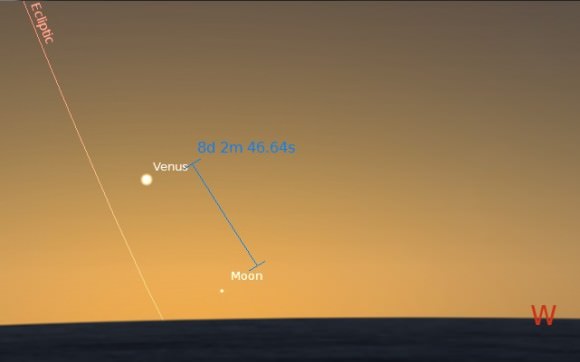
January
01- The extremely thin crescent 12-15 hour old Moon will present a challenge for North American viewers low to the west at dusk.
03- Quadrantid meteors peak with a ZHR=120 at ~05:00 UT, best seen from the Atlantic region. Favorable in 2014, with the Moon a 2 day old waxing crescent.
04- Earth reaches perihelion at 12:00 UT, 147.1 million kilometres from the Sun.
04- Mars passes 1.3’ from the +11.5th magnitude galaxy NGC 4684.
05- Jupiter reaches opposition for 2014 and shines at magnitude -2.7.
10- A Possible meteor shower due to dust from the Comet (formerly known as) ISON over the next few days?
11- Venus reaches inferior conjunction between the Sun and the Earth, shining at -4th magnitude. It may be just possible to spot it five degrees north of the solar limb from high northern latitudes.
13- Moon reaches its farthest northern declination for 2014 a 19.4 degrees.
16- The most distant Full Moon, and visually smallest Full Moon of 2014 occurs, with the Moon reaching Full within two hours of apogee. MiniMoon!
25- The Moon occults Saturn for the South Pacific at ~13:58 UT.
27- The Moon reaches its farthest southern declination for 2014, at -19.3 degrees.
30- A Black Moon occurs, as reckoned as the second New Moon in a month with two.
31- Mercury reaches a favorable elongation, shining at magnitude -0.9, 18.4 degrees east of the Sun.
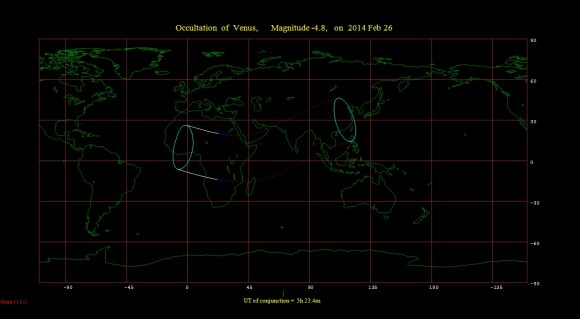
February
06- Two shadows transit the cloud tops of Jupiter from 10:20 UT-12:44 UT, favoring western North America.
21- The Moon occults Saturn for the Indian Ocean at ~22:18 UT.
26- The 14% waning crescent Moon occults Venus for central Africa at ~5:23 UT.
March
07- Asteroid 9 Metis occults a +7.9 magnitude star for Europe ~3:14 UT.
10- The 70% illuminated waxing gibbous Moon occults the +3.6 magnitude star Lambda Geminorum for North America in the evening sky.
14- Mercury reaches greatest morning elongation at 27.5 degrees west of the Sun shining at magnitude +0.1. Mercury’s best morning apparition in 2014 for southern hemisphere observers.
16- A double shadow transit of Jupiter’s moons occurs from 22:20 to 00:35 UT, visible from Atlantic Canada after sunset.
20- The Northward Equinox occurs at 16:57 UT.
20- GEO satellite eclipse season occurs, as geostationary satellites enter Earth’s shadow near the equinox.
20- Regulus is occulted by asteroid 163 Erigone for the NE United States and Canada at ~6:07 UT, The brightest star occulted by an asteroid in 2014.
21- The Moon occults Saturn for the South Atlantic at ~3:18 UT.
24- A double shadow transit of Jupiter’s moons occurs from 2:08 to 2:28 UT, favoring eastern North America.
24- Asteroid 172 Baucis occults a +6.7 magnitude star for South America at ~9:27 UT.
22- Venus reaches greatest morning elongation, at 47 degrees west of the Sun.
28- Asteroid 51 Nemausa occults a +7.7 magnitude star for Africa at 20:02 UT.
30- A Black Moon occurs, as reckoned as the second New Moon in one month.

April
08- Mars reaches opposition for 2014, shining at magnitude -1.5.
12- A close conjunction of Venus and Neptune occurs, with the planets just 0.7 degrees apart at 2:00 UT.
15- A Total Lunar Eclipse occurs, visible from the Americas and centered on 7:47 UT.
17- The Moon occults Saturn for South America at ~7:19 UT.
29- An Annular Solar Eclipse visible from Australia and the southern Indian Ocean occurs, centered on 6:05 UT. This is a unique, non-central antumbral eclipse!
May
03- Asteroid 105 Artemis occults a +7.7 magnitude star for NW Brazil and Peru at ~9:17 UT.
04- Asteroid 34 Circe occults a +7.4 magnitude star for Peru and Ecuador at ~10:12 UT.
06- The closest lunar apogee of 2014 occurs at 404,318 km distant at 10:23 UT.
07- Eta Aquariid meteors peak, with a ZHR=55 at 4:00 UT. Best observed from the Atlantic Region. Favorable in 2014, with the 7-day old Moon at waxing gibbous.
07- Asteroid 206 Hersilia occults a +7.5 magnitude star for Australia and Indonesia at ~17:49 UT.
10- Saturn reaches opposition for 2014, shining at magnitude +0.1. Saturn’s rings are tipped open a maximum of 23 degrees to our line of sight on February 11th, and widening overall in 2014.
13- A double shadow transit of Jupiter’s moons occurs from 9:20-9:32 UT favoring NW North America.
14- The Moon occults Saturn for Australia and New Zealand at ~12:18 UT.
24- A meteor shower outburst may be in the offing, courtesy of Comet 209P LINEAR. Will the “Camelopardalids” perform?
24- Asteroid 33 Polyhymnia occults a +5.5 magnitude star for South America at ~8:30 UT.
25- Mercury reaches maximum dusk elongation, 22.7 degrees east of the Sun. Mercury’s best evening apparition for 2014 for northern hemisphere viewers.
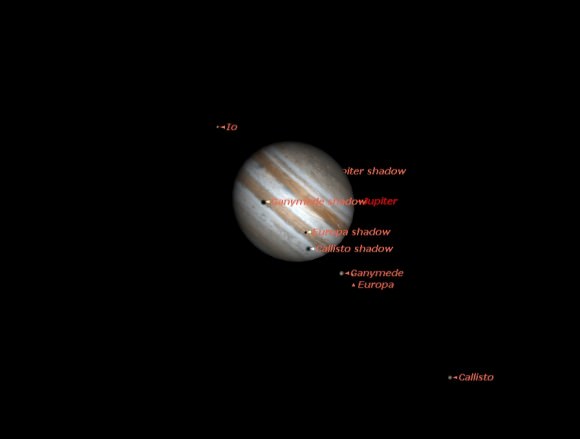
June
3- A triple Jovian shadow transit occurs from 18:05-19:44 UT, favoring eastern Europe and Africa. This is the only triple shadow transit for 2014.
10- The Moon occults Saturn for the southern Indian Ocean at ~18:48 UT.
21- The Northward Solstice occurs at ~10:51 UT.
22- The International Space Station enters a period of full illumination near the June solstice, favoring multiple views for northern hemisphere viewers.
24- The waning crescent Moon passes within a degree of Venus, a great time for spotting the planet in the daytime.
26- The Moon occults Mercury just 20 hours prior to New… a tough catch, but may visible from the SE US and Venezuela just before sunrise.
27- The June Boötid meteors peak, with a ZHR variable from 0-100 at ~15:00 UT, favoring the Central Pacific. Optimal in 2014, as the Moon is at New phase.
July
04- Earth reaches aphelion at 2:00 UT, at 152,098,232 kilometres from the Sun.
04- Pluto reaches opposition at 3:00 UT.
05– 1 Ceres passes just 10’ from 4 Vesta in the constellation Virgo.
06– The Moon occults Mars for South America at ~01:21 UT
08– The Moon occults Saturn for Argentina & Chile at ~2:25 UT.
12- Mercury reaches its maximum elongation of 20.9 degrees west of the Sun, shining at magnitude +0.4 in the dawn.
12– The first Full Proxigean “Super” Moon (1 of 3) for 2014 occurs at 11:27 UT. The Moon reaches Full 21 hours prior to perigee.
30– The Southern Delta Aquarids peak, with a ZHR=20. Time variable, favorable in 2014 with the waxing crescent Moon 4 days past New.
20– Asteroid 451 Patientia occults a +7.1 magnitude star for South Africa at ~17:15 UT.
28- The farthest lunar apogee of 2014 occurs, with the Moon 406,568 kilometres distant at 3:28 UT.
30– Asteroid 103 Hera occults a +6.1 magnitude star for west Africa and central South America at ~1:11 UT.
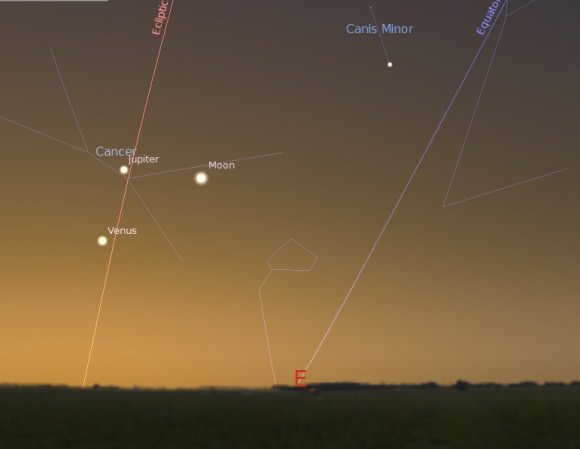
August
02– A close conjunction of Mercury and Jupiter occurs, with the planets just 0.9 degrees apart at 19:00 UT. Visible in SOHO’s LASCO C3 camera.
04- The Moon occults Saturn for Australia at ~10:31 UT.
10– The closest lunar perigee of 2014 occurs, with the Moon 356,896 kilometres distant at 17:44 UT.
10- The Closest Full Moon of the year & “Super” Moon (2 of 3) for 2014 occurs, with Full Moon occurring just 27 minutes after perigee.
13– The Perseid meteors peak, with a ZHR=100 at ~04:00 UT favoring The Atlantic region. Unfavorable in 2014, with the 17 day old Moon at waning gibbous.
18- A conjunction of Venus and Jupiter occurs 5:00 UT, the closest conjunction of two naked eye planets in 2014, with the two just 15’ apart.
29- Neptune reaches opposition at 14:00 UT, shining at +7.8 magnitude.
31– The Moon occults Saturn for Africa and the eastern US (in the daytime) at ~18:59.
September
05- Venus passes 0.7 degrees from the bright star Regulus.
09– The final Full “Super” Moon (3 of 3) for 2014 occurs at 1:39 UT, just 22 hours after perigee.
15– Comet C/2013 V5 Oukaimeden may reach +5.5th magnitude for southern hemisphere observers.
20– Mercury passes 0.5 degrees south of the bright star Spica at 21:00 UT.
21- Mercury reaches its greatest elongation of 26.4 degrees east of the Sun shining at magnitude +0.0 in the dawn sky. Mercury’s best sunset apparition for 2014 for southern hemisphere observers.
23- The Southward Equinox occurs at 2:29 UT.
23- GEO satellite eclipse season occurs, as geostationary satellites enter Earth’s shadow near the equinox.
28– The Moon occults Saturn for the northern Pacific at ~4:25 UT. The Moon also occults 1 Ceres and 4 Vesta on the same day!
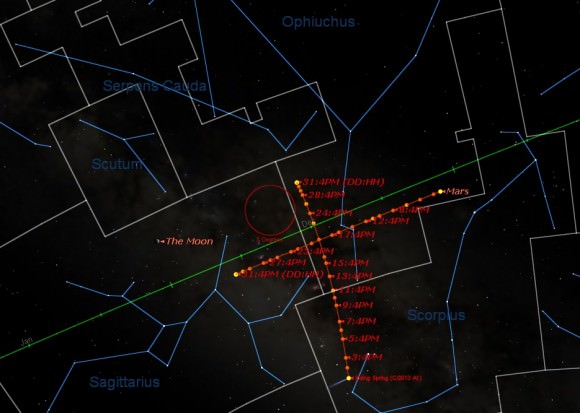
October
04- 1 Ceres passes just 30’ north of Saturn.
06- Possible Draconid meteor shower, highly variable in terms of rates and timing, but unfavorable in 2014, with the Moon just two days from Full.
08- A Total Lunar Eclipse visible from the Pacific Rim region occurs, centered on 10:56 UT. The planet Uranus will also lie less than a degree away from the eclipsed Moon!
14- Comet C/2012 K1 PanSTARRS may reach +5th magnitude for southern hemisphere viewers.
13– The Moon reaches it shallowest northern declination for 2014 at +18.5 degrees.
19- Comet C/2013 A1 Siding Spring passes just 7’ from the planet Mars. Globular cluster NGC 6401 also lies nearby.
22– The Orionid meteor shower peaks at ~05:00 UT, with a predicted ZHR=25 favoring the Americas. Optimal in 2014, with the Moon at waning crescent.
22– The Moon occults Mercury for Australia just 24 hours prior to New as seen from Australia.
23- A Partial Solar Eclipse visible from western North America occurs centered on 21:46 UT.
25- The Moon occults Saturn for the northern Atlantic at ~15:43 UT.
25- The Moon reaches its shallowest southern point for 2014, at a declination of -18.6 degrees.
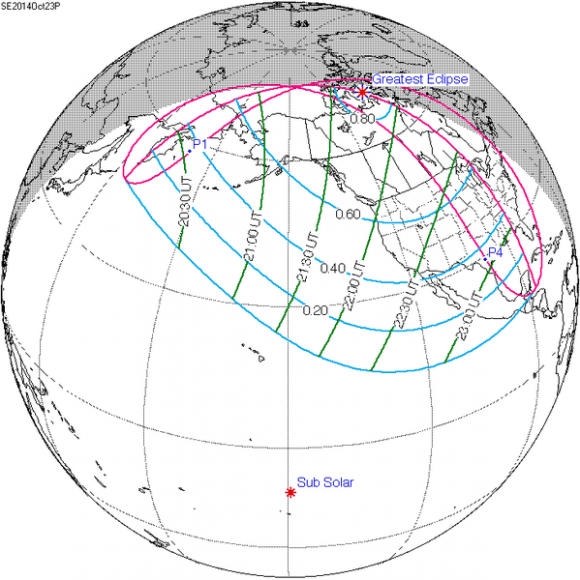
November
01- Mercury reaches its greatest elongation 18.7 degrees west of the Sun, shining at magnitude -0.5. The best morning apparition of Mercury for 2014 as seen from the northern hemisphere.
18– Leonid meteors peak at 05:00 UT with a ZHR=20 favoring the Atlantic region. Optimal in 2014, with the 25 day old Moon at waning crescent phase.
20- Asteroid 3 Juno occults a +7.4 magnitude star for the US NE and eastern Canada.
27- The farthest lunar perigee of 2014 occurs with the Moon 369,824 km distant at 23:12 UT.
December
09- A double shadow transit of Jupiter’s moons occurs from 4:18 to 4:27 UT favoring eastern North America.
12- A double shadow transit of Jupiter’s moons occurs from 16:19 to 16:44 UT favoring NW North America.
13- The Geminid meteors peak with a ZHR=120 at ~01:00 UT, favoring the Middle East & Eastern Europe. Unfavorable in 2014, with the 20 day old Moon at waning gibbous.
18- Asteroid 702 Alauda occults a +6.2 magnitude star at 14:12 UT for eastern Australia.
21- The Southward Solstice occurs at 23:03 UT.
21- The International Space Station enters period of full illumination around the solstice, with multiple nightly views favoring the southern hemisphere.
21- A double shadow transit of Jupiter’s moons occurs from 14:17 to 15:55 UT, favoring the Far East and Australia.
Don’t see your favorite or most anticipated event of 2014 on the list? Drop us a line and let us know!
Links & Resources Used:
-The American Meteor Society list of 2014 showers
-NASA’s Eclipse Website
-The United States Naval Observatory’s Astronomical Almanac Online
-Guy Ottewell’s 2014 Astronomical Calendar
-The Royal Astronomical Society of Canada’s 2014 Observer’s Calendar
-Steve Preston’s list of asteroid occultation events for 2014
-Seiichi Yoshida’s Comet website
-Fourmilab’s Lunar Apogee and Perigee calculator
-The International Occultation Timing Association’s list of lunar occultations for 2014.
And finally, thanks to all of those too numerous to name who provided discussions/diatribes/input via Twitter/G+/message boards/etc to make this listing possible… let another exciting year of astronomy begin!

